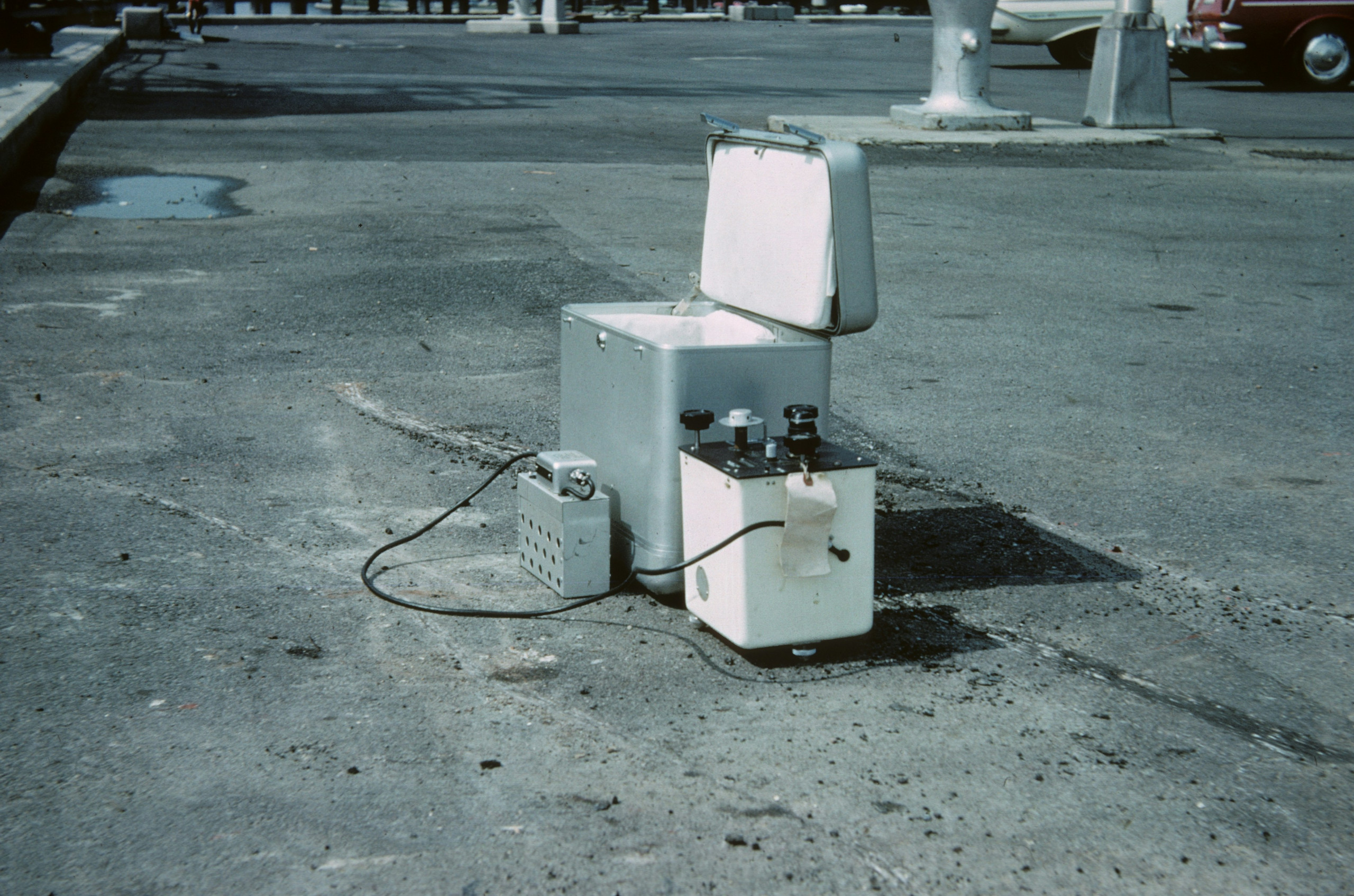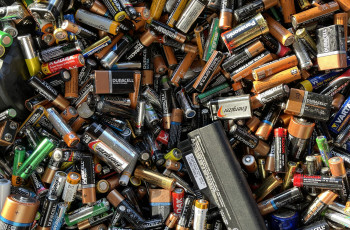In this article, you will gain valuable insight into the environmental consequences of heavy-duty die grinder operations. As these powerful tools are widely used in various industries, it is crucial to understand the potential impact they have on our surroundings. By delving into the intricate details of these operations, we can uncover ways to mitigate their environmental footprint and move towards more sustainable practices. From exploring the emissions released during operation to assessing the disposal of waste materials, this article will equip you with the knowledge needed to make informed decisions and contribute towards a greener future.
Definition of heavy-duty die grinder operations
Heavy-duty die grinder operations refer to the use of powerful and robust die grinders in industrial settings to perform various tasks such as cutting, grinding, polishing, and deburring of materials like metal, wood, and plastic. These operations involve the use of high-speed rotating abrasive wheels or tools, powered by compressed air, electricity, or other energy sources, to shape or remove material from the workpiece. Heavy-duty die grinder operations are commonly found in manufacturing, construction, metal fabrication, and maintenance industries.
Explanation of heavy-duty die grinder operations
Heavy-duty die grinder operations are widely used due to their versatility, efficiency, and precision. They provide a quick and effective solution for shaping, smoothing, and removing material, making them essential tools in various industrial processes. These operations typically involve the use of handheld or bench-mounted die grinders that are specially designed to withstand heavy loads and prolonged use.
Die grinder operations are usually accompanied by the emission of air pollutants, noise, generation of hazardous waste, and vibrations that can have adverse effects on the environment, worker’s health, and surrounding communities. However, by implementing appropriate mitigation strategies and adhering to environmental regulations, these impacts can be minimized, ensuring sustainable practices in heavy-duty die grinder operations.

Usage and applications of heavy-duty die grinders
Heavy-duty die grinders find wide-ranging applications across various industries. In metal fabrication, they are commonly used for shaping and removing excess material from metal components, preparing them for welding, or creating intricate features. In construction, die grinders are used to cut, grind, and polish concrete, tiles, and other construction materials. Additionally, die grinders are used in woodworking for shaping and finishing wooden components.
The versatility of heavy-duty die grinders also extends to maintenance and repair tasks, where they are utilized for cleaning or repairing machinery, removing rust or paint, and deburring edges. With the appropriate selection of abrasive wheels or tools, die grinders can be adapted to perform different tasks, making them an indispensable tool in various industrial operations.
Environmental concerns related to heavy-duty die grinder operations
While heavy-duty die grinder operations offer numerous benefits in terms of efficiency and performance, they also pose certain environmental concerns that need to be addressed.
Air pollution emissions
Heavy-duty die grinder operations are a significant source of air pollution emissions. The use of abrasive wheels or tools produces fine particulate matter, metal dust, and other airborne pollutants that can be harmful when inhaled. These emissions can contribute to air pollution and pose health risks to workers and nearby communities.
Noise pollution
The high-speed rotating components of die grinders generate significant noise levels, resulting in noise pollution. Prolonged exposure to excessive noise can lead to hearing loss, stress, and other health issues among workers. It can also disrupt the peace and tranquility of surrounding environments, affecting both human and animal populations.
Generation of hazardous waste
The grinding and cutting processes performed by die grinders generate hazardous waste in the form of metal shavings, dust, and debris. If not properly managed, these wastes can contaminate soil, water bodies, and pose health risks to workers and nearby communities. The disposal of hazardous waste requires careful consideration to prevent environmental pollution and ensure worker safety.
Vibrations and associated risks
Die grinder operations generate vibrations, especially during high-speed grinding or cutting tasks. Prolonged exposure to vibrations can lead to hand-arm vibration syndrome among workers, causing symptoms such as numbness, pain, and reduced dexterity. Additionally, vibrations can also impact the performance and longevity of equipment, leading to increased maintenance costs and potential safety hazards.

Air pollution emissions from heavy-duty die grinder operations
Emission sources
Air pollution emissions from heavy-duty die grinder operations primarily come from the use of abrasive wheels or tools. As the abrasive material cuts or grinds the workpiece, fine particles, metal dust, and other pollutants are released into the air. The use of certain materials, such as grinding stainless steel or other alloys, can result in the emission of toxic substances like hexavalent chromium.
Types of pollutants released
The pollutants released during heavy-duty die grinder operations include particulate matter, metal dust, volatile organic compounds (VOCs), and gases such as carbon monoxide. These pollutants can have detrimental effects on both human health and the environment.
Health impacts on workers and communities
Workers directly involved in heavy-duty die grinder operations are at risk of inhaling hazardous pollutants. Fine particles and metal dust can penetrate deep into the respiratory system, causing respiratory irritation, lung damage, and long-term health issues. Nearby communities may also be exposed to these pollutants, leading to potential health risks.
Steps for reducing air pollution emissions
To minimize air pollution emissions from heavy-duty die grinder operations, several steps can be taken. Firstly, the use of abrasive wheels or tools with lower emission properties, such as those made from advanced materials or with improved designs, can be employed. Effective dust collection systems should be implemented to capture and contain the emitted particles, preventing their release into the air. Regular maintenance and inspection of equipment can also help ensure optimal performance and minimize emissions. Additionally, implementing proper ventilation systems and providing workers with personal protective equipment (PPE) like respirators can further reduce their exposure to harmful pollutants.
Noise pollution arising from heavy-duty die grinder operations
Sources of noise pollution
Noise pollution in heavy-duty die grinder operations mainly originates from the high-speed rotation of the abrasive wheels or tools. The rapid movement of these components creates vibrations and produces loud noises. Air compressors or other power sources used to drive the die grinders also contribute to the overall noise levels.
Impact on worker’s health
Prolonged exposure to excessive noise levels can have detrimental effects on the health of workers. The loud noises generated by heavy-duty die grinders can cause hearing loss, tinnitus, stress, and even cardiovascular problems. Workers exposed to high noise levels may experience difficulties communicating, concentrating, and fatigue, which can impact their performance and overall well-being.
Adverse effects on surrounding environments
Noise pollution from heavy-duty die grinder operations can extend beyond the workplace, affecting nearby environments. The excessive noise levels can disturb residential areas, schools, hospitals, and other sensitive locations, causing discomfort and potentially disrupting daily activities. It can also disturb wildlife, leading to ecological imbalances and habitat disturbances.
Noise control measures and regulations
To mitigate noise pollution in heavy-duty die grinder operations, various noise control measures can be implemented. Employing engineering controls such as noise enclosures, barriers, and sound-absorbing materials can help attenuate noise levels. Regular maintenance of equipment and lubrication can also reduce noise emissions. Administrative controls like work rotation schedules and designated quiet areas can minimize workers’ exposure to high noise levels. Moreover, adherence to noise pollution regulations and standards set by local authorities is crucial in ensuring a safe and quieter work environment.

Generation of hazardous waste during heavy-duty die grinder operations
Types of hazardous waste produced
Heavy-duty die grinder operations result in the generation of hazardous waste, predominantly metal shavings, dust, and debris. Depending on the workpiece and application, the waste may contain metals, such as steel, aluminum, or copper, which can be harmful to the environment if not properly managed.
Potential risks and impacts on human health
Improper handling and disposal of hazardous waste generated during heavy-duty die grinder operations can pose risks to human health. Metal dust and shavings can cause injuries if they enter the eyes, skin, or respiratory system. Inhalation or ingestion of metal particles can lead to various health disorders, including respiratory problems, heavy metal poisoning, and long-term organ damage.
Proper waste management techniques
To mitigate the risks associated with the generation of hazardous waste, proper waste management techniques should be employed. Implementing effective collection and containment systems, such as dust collectors and magnetic separators, can help capture and segregate the waste. Regular cleaning and maintenance of collection systems are essential to ensure optimal performance. The collected hazardous waste should be properly labeled, stored in designated areas, and disposed of in accordance with local regulations and guidelines, which often involve recycling or proper disposal through authorized waste management facilities.
Role of government regulations
Government regulations play a crucial role in regulating the generation and disposal of hazardous waste from heavy-duty die grinder operations. Environmental agencies and regulatory bodies establish guidelines and standards that dictate the proper handling, storage, transportation, and disposal of hazardous waste. Compliance with these regulations is essential to protect the environment, ensure worker safety, and avoid legal penalties. It is the responsibility of the operators and industry stakeholders to stay updated with the applicable regulations and maintain diligent adherence to proper waste management practices.
Vibrations and associated risks in heavy-duty die grinder operations
Causes of vibrations
Vibrations in heavy-duty die grinder operations are primarily caused by the high-speed rotation and uneven distribution of mass in the abrasive wheels or tools. Imbalances in the wheels, worn-out bearings, or improper assembly can also contribute to increased vibrations. The use of excessive force or improper gripping techniques can further amplify vibrations.
Effects on equipment and worker’s health
High levels of vibrations can have detrimental effects on both equipment and workers’ health. Vibrations can lead to premature wear and tear of die grinders, reducing their performance and lifespan. Prolonged exposure to vibrations can cause hand-arm vibration syndrome (HAVS) among workers, resulting in symptoms like numbness, pain, and reduced grip strength. HAVS can significantly impact workers’ productivity, leading to work-related injuries, and affect their quality of life.
Preventive measures to reduce vibration-related risks
To mitigate vibration-related risks in heavy-duty die grinder operations, preventive measures should be implemented. Regular inspection and maintenance of equipment, including checks for wheel balance, bearing condition, and proper assembly, can help minimize vibrations. Providing workers with ergonomically designed tools and equipment, such as anti-vibration gloves, can reduce their exposure to vibrations. Proper training in gripping techniques and posture can also help minimize the risk of HAVS. Additionally, implementing work/rest schedules and job rotation can alleviate the effects of prolonged vibration exposure.
Mitigation strategies for minimizing environmental impact
To minimize the environmental impact of heavy-duty die grinder operations, various mitigation strategies can be employed.
Use of advanced and efficient equipment
The use of advanced and efficient equipment can significantly reduce the environmental impact of heavy-duty die grinder operations. Investing in high-quality, energy-efficient die grinders can optimize performance while minimizing energy consumption and emissions. Upgrading to eco-friendly abrasive wheels or tools made from recycled materials can also contribute to resource conservation and reduced environmental impact.
Regular maintenance and inspection protocols
Implementing regular maintenance and inspection protocols for die grinders and associated equipment is crucial in ensuring optimal performance and minimizing emissions and vibrations. Regular lubrication, cleaning, and calibration can help prevent equipment breakdowns and reduce the need for replacement, improving overall productivity and reducing waste.
Adoption of noise and vibration isolation techniques
The adoption of noise and vibration isolation techniques can effectively reduce the environmental impact of heavy-duty die grinder operations. Installing sound-absorbing materials, such as acoustic panels or barriers, can help mitigate noise pollution by reducing the propagation of sound waves. Similarly, using vibration isolation devices, such as anti-vibration mounts or pads, can minimize vibrations transmitted to the surrounding environment, protecting both equipment and worker’s health.
Training and education programs for workers
Proper training and education programs are essential in creating awareness about the environmental impact of heavy-duty die grinder operations and promoting sustainable practices among workers. Training should include instructions on the proper use and care of equipment, waste management techniques, noise and vibration control measures, and adherence to environmental regulations. Educating workers about the importance of their role in environmental protection can foster a sense of responsibility and encourage the adoption of sustainable practices.
Importance of stakeholders’ involvement in environmental protection
Addressing the environmental impact of heavy-duty die grinder operations requires the involvement and collaboration of various stakeholders within the industry.
Responsibilities of manufacturers and suppliers
Manufacturers and suppliers of heavy-duty die grinders have a crucial role in minimizing the environmental impact of their products. They should prioritize the development and production of energy-efficient and eco-friendly equipment. Providing clear instructions on maintenance, waste management, and noise and vibration control should be part of their initiatives. Manufacturers should also offer comprehensive training and support programs to users, ensuring proper and responsible use of their products.
Involvement of workers in sustainable practices
Workers directly involved in heavy-duty die grinder operations play a vital role in implementing sustainable practices. Their active participation in training programs, adherence to environmental regulations, and responsible use of equipment and resources is essential. Workers should report any potential environmental concerns and contribute to improving the overall environmental performance of heavy-duty die grinder operations.
Government policies and regulations
Government policies and regulations play a critical role in shaping the environmental practices of heavy-duty die grinder operations. Environmental agencies should establish and enforce stringent regulations to minimize air and noise pollution, regulate waste management, and promote responsible use of equipment. They should also provide support and incentives for industry players to adopt sustainable practices and invest in research and development for eco-friendly technologies.
Engagement of local communities and environmental organizations
Local communities and environmental organizations should actively engage with heavy-duty die grinder operations to ensure sustainable practices. Collaborative efforts can include regular monitoring of air and noise quality, establishing communication channels to address concerns, and promoting awareness campaigns about environmental impact mitigation. By working together, communities and organizations can contribute to creating a healthier and more sustainable environment for all stakeholders.
Case studies demonstrating successful environmental management in heavy-duty die grinder operations
Company A: Implementing emissions control strategies
Company A, a manufacturer of heavy-duty die grinders, recognized the importance of emissions control in their operations. They invested in advanced dust collection systems and implemented regular maintenance protocols to minimize air pollution emissions. By partnering with local environmental agencies, they developed efficient grinding techniques and optimized the design of their abrasive wheels to reduce the generation of airborne pollutants. Company A also conducted regular air quality monitoring to ensure compliance with emission standards and actively engaged workers in training programs to promote responsible usage of their equipment.
Company B: Noise reduction initiatives
Company B, a metal fabrication firm, prioritized noise reduction in their heavy-duty die grinder operations. They applied noise control measures such as enclosing grinding stations with sound-absorbing materials and implementing noise barriers. Company B also invested in advanced vibration isolation devices and provided workers with anti-vibration gloves, resulting in reduced noise levels and improved worker comfort. Regular inspections and maintenance of their grinding equipment ensured optimal performance and minimized noise emissions. Additionally, they conducted periodic noise assessments to monitor and maintain compliance with noise pollution regulations.
Company C: Responsible waste management practices
Company C, a construction company, focused on responsible waste management in their heavy-duty die grinder operations. They implemented comprehensive waste segregation systems, ensuring proper collection and containment of hazardous waste. By partnering with authorized waste management facilities, Company C ensured the proper disposal and recycling of waste, minimizing the risk of environmental contamination. They also educated workers about the importance of waste management through training programs and actively encouraged their participation in waste reduction initiatives. Company C’s commitment to responsible waste management set an example for sustainable practices in the industry.
Conclusion
Heavy-duty die grinder operations, while providing numerous benefits in terms of efficiency and precision, have significant environmental implications. Air pollution emissions, noise pollution, generation of hazardous waste, and vibrations are among the key concerns associated with these operations. However, through the implementation of appropriate mitigation strategies, such as the use of advanced equipment, regular maintenance protocols, and training programs, the environmental impact of heavy-duty die grinder operations can be minimized.
Involvement from all stakeholders, including manufacturers, suppliers, workers, governments, local communities, and environmental organizations, is crucial in achieving sustainable practices in the industry. By prioritizing the reduction of air and noise pollution, responsible waste management, and the implementation of effective control measures for vibrations, heavy-duty die grinder operations can coexist with the environment in a harmonious and sustainable manner. It is imperative for the industry to recognize the importance of sustainable practices for its future, ensuring a healthier environment for generations to come.



